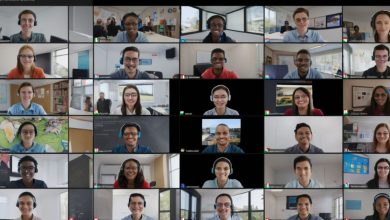Fulbright Program Guide: Application Tips and Timeline
The Fulbright Program is one of the most prestigious international exchange programs in the world, offering exceptional opportunities for students, scholars, and professionals to study, research, or teach abroad. But applying for a Fulbright grant requires thoughtful planning, strong documents, and precise timing. In this guide, you’ll learn exactly what the Fulbright Program entails, how to prepare a compelling application, and the timeline you need to follow for a successful submission.
What is the Fulbright Program?
The Fulbright Program, sponsored by the U.S. government, supports cultural and educational exchange between the United States and over 160 countries. Its mission is to increase mutual understanding through educational and professional opportunities abroad. Fulbright offers grants for:
- Graduate students conducting research or pursuing degrees
- Professionals and artists developing independent projects
- English Teaching Assistants (ETAs) placed in classrooms abroad
- Scholars engaging in academic research or teaching
The program promotes cross-cultural understanding, leadership development, and academic excellence.
Why Apply for a Fulbright Grant?
Pursuing a Fulbright grant can be a life-changing experience. Here are some of the key benefits:
- Academic and professional growth through international research or teaching
- Cultural immersion that fosters global understanding and adaptability
- Career advancement by standing out in competitive job markets
- Alumni network that connects you with thousands of Fulbrighters worldwide
Many participants also develop long-term collaborations and projects with international partners that last far beyond the grant period.
Fulbright Program Requirements and Eligibility
Before applying, it’s essential to determine if you’re eligible. While requirements vary slightly by country and grant type, here are the universal criteria:
- U.S. citizenship (for U.S. applicants)
- Strong academic record
- Project feasibility and clarity
- Demonstrated leadership and cultural adaptability
- Language proficiency (when required)
- Limited prior experience in the host country
Some countries may require additional qualifications, such as specific degrees or teaching credentials. Carefully review country-specific information to tailor your application.
Fulbright Application Timeline
Timing is everything when applying for Fulbright. Here’s a breakdown of the general timeline:
- 12–10 months before deadline: Begin researching countries and grant types
- 9–7 months before deadline: Work on essays and gather letters of recommendation
- October (typically): Submit application through Fulbright online portal
- November–February: Undergo campus or national interviews (if applicable)
- March–May: Receive notifications of selection status
- August–September: Depart for host country (if awarded)
Planning ahead ensures you meet all institutional and national deadlines without stress.
Step-by-Step Fulbright Application Process
Choose a Country and Grant Type
Start by identifying the country where your goals align with program priorities. Each country has specific preferences and project needs. Decide between a research/study grant or an English Teaching Assistantship, depending on your background and interests.
Develop a Competitive Project Proposal
Your proposal must be well-researched, realistic, and culturally relevant. For research-based projects:
- Explain the purpose and methodology
- Detail expected outcomes and local collaboration
- Address logistical and ethical considerations
For ETAs:
- Highlight teaching experience or interest in education
- Discuss how you’ll engage students and contribute to the host community
Prepare Personal Statement and Statement of Grant Purpose
These two essays are critical. The personal statement should reflect your journey, values, and motivation for applying. The statement of grant purpose should focus strictly on your proposed project or teaching plan. Keep it:
- Clear and concise
- Specific and focused
- Free of jargon
- Tailored to the chosen country
Secure Strong Letters of Recommendation
Ask individuals who know your academic or professional work well and can comment on your qualifications relevant to the Fulbright mission. Provide them with your resume and a draft of your essays so they can tailor their letters accordingly.
Language Evaluation and Transcripts
Some countries require a formal language evaluation. This can be done by a professor or language instructor. Submit transcripts from all institutions you’ve attended, even if only for a semester.
Submit Through the Fulbright Online Application Portal
Before submitting, double-check all sections, ensure your essays are polished, and confirm that recommenders have uploaded their letters. Submit by your campus deadline (if applicable) or by the national deadline.
Top Tips for a Successful Fulbright Application
- Start early to give yourself time to research and revise
- Tailor your essays to the host country’s goals and culture
- Be authentic in your personal statement
- Demonstrate impact both in the U.S. and abroad
- Seek feedback from advisors, alumni, or writing centers
These strategies can greatly enhance your application’s competitiveness.
What Happens After You Submit?
Once submitted, your application goes through a multi-stage review process:
- Initial review by country or regional committees
- Interview (for some grants or countries)
- Final selection by Fulbright commissions and U.S. Department of State
- Notification of status: selected, alternate, or not recommended
If selected, you’ll receive grant details, visa instructions, and pre-departure orientation materials. If not selected, you can often apply again the following year.
FAQs About the Fulbright Program
Is the Fulbright Program only for U.S. citizens?
For U.S. grants, yes. However, many countries have reciprocal programs for non-U.S. citizens funded through Fulbright Commissions.
Can I apply to more than one country?
No. Applicants may only apply to one country and one grant type per cycle.
Is prior teaching or research experience required?
It helps but is not mandatory. What matters most is clarity of purpose, feasibility, and alignment with program goals.
Do I need to speak the host country’s language?
Not always. Language requirements vary. For ETAs, some countries prefer English-only instruction. For research, proficiency may be essential.
Can I reapply if not selected?
Absolutely. Many successful applicants were selected on a second or even third attempt, having refined their proposals and essays.
Conclusion
The Fulbright Program is more than just a scholarship—it’s a platform for mutual understanding, leadership, and long-term global impact. If you’re ready to represent your country, embrace new cultures, and pursue academic or professional growth abroad, Fulbright could be your next step.
Do your research, plan strategically, and let your authentic goals shine through your application. The effort is worth the opportunity.
Published on: 4 de June de 2025








